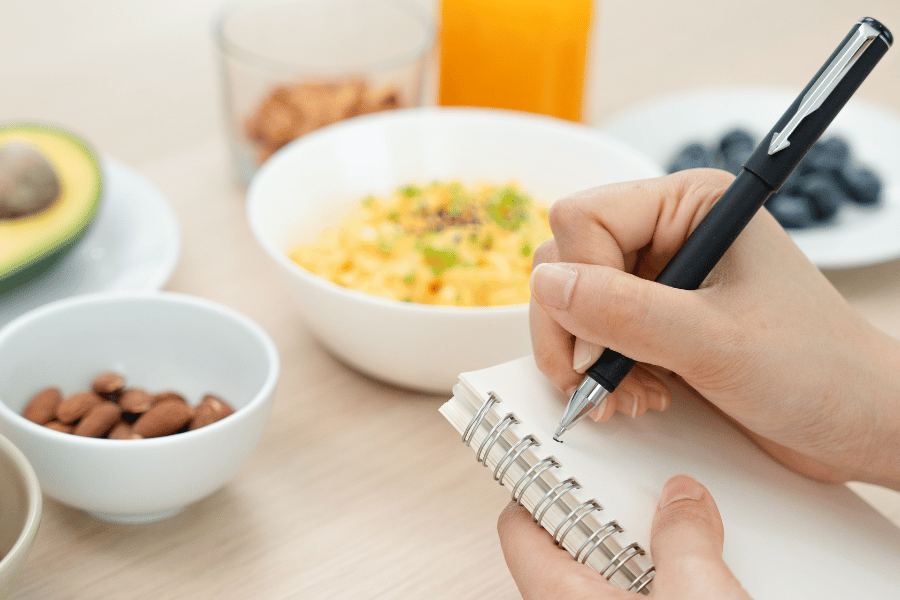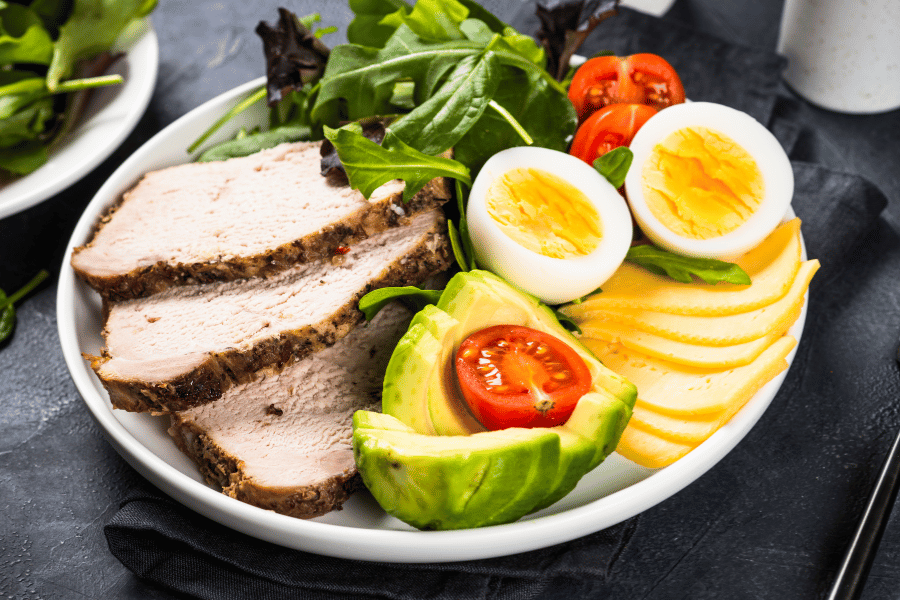Keto diet plans have surged in popularity due to their effectiveness in promoting weight loss and enhancing overall health. Central to the keto diet is the concept of transforming the body’s fuel source from carbohydrates to fats, a state known as ketosis. This shift not only aids in weight loss but also offers benefits like increased energy and mental clarity.
However, it’s crucial to recognize that a one-size-fits-all approach does not apply to keto dieting. The importance of creating a personalized keto diet plan lies in addressing individual dietary needs and health goals. This article aims to guide you through understanding the keto diet, its benefits and challenges, and how to create a plan tailored to your unique needs.
As noted by renowned nutritionist Dr. Jane Smith, “The effectiveness of a keto diet hinges on its customization. Personalizing your plan can lead to significant health benefits.”
In the following sections, we will delve deeper into what constitutes a keto diet, its various forms, and how to adapt it to your lifestyle. We’ll also explore the benefits and challenges of adhering to a keto diet plan, provide practical steps for creating your personalized plan, suggest keto-friendly foods and recipes, and address frequently asked questions to ensure you’re well-equipped to embark on your keto journey.

Understanding the Keto Diet
A ketogenic diet, commonly known as a keto diet, is a high-fat, moderate-protein, and low-carbohydrate eating plan. Its primary goal is to shift your body’s metabolism from relying on glucose for energy to burning fats, a state termed as ketosis. This metabolic state is achieved by significantly reducing carbohydrate intake and replacing it with healthy fats.
The process of ketosis plays a pivotal role in the keto diet’s effectiveness for weight loss. When the body is deprived of carbohydrates, it turns to stored fats for energy, leading to weight loss. This process also leads to the production of ketones, compounds that can provide a more stable and efficient energy source for the body and brain.
There are several variations of the keto diet, including:
- Standard Keto Diet (SKD): This is the most common form, typically comprising about 70% fat, 20% protein, and only 10% carbohydrates.
- Targeted Keto Diet (TKD): This allows for additional carb intake around workouts, making it suitable for individuals with a more active lifestyle.
- Cyclical Keto Diet (CKD): This involves periods of higher-carb refeeds, such as 5 ketogenic days followed by 2 high-carb days.
Each type caters to different lifestyles and fitness goals. As Dr. Smith explains, “Choosing the right type of keto diet is essential for maximizing its benefits while ensuring it aligns with your daily routines and exercise habits.”

keto diet plan
Benefits and Challenges of Keto Diet Plans
The keto diet plan offers a range of potential benefits, making it a popular choice for those seeking to improve their health and wellbeing. Key benefits include:
- Weight Loss: The shift to fat as a primary energy source naturally leads to a reduction in body fat. The high-fat content can also lead to increased satiety, reducing overall calorie intake.
- Improved Energy and Mental Clarity: Many individuals report a significant boost in energy levels and clearer thinking when on a keto diet, as ketones provide a steady energy source for the brain.
- Health Benefits: Emerging research suggests potential benefits in managing conditions like type 2 diabetes, epilepsy, and even certain types of cancer.
However, adhering to a keto diet can also present challenges. Common side effects, especially in the initial stages, include the “keto flu,” characterized by symptoms like headaches, fatigue, and irritability. These symptoms typically subside as the body adapts to a state of ketosis.
Dr. Smith emphasizes the importance of a well-designed plan: “A tailored keto diet plan can help mitigate the challenges and side effects, ensuring a smoother transition and more sustainable results.”
It’s crucial to approach a keto diet with a balanced perspective, acknowledging both its benefits and potential hurdles. The next sections will guide you through creating a keto diet plan that considers your personal dietary preferences and goals, helping you navigate the diet’s challenges successfully.
Steps to Create Your Keto Diet Plan
Crafting a successful keto diet plan involves several key steps to ensure it aligns with your individual health goals and lifestyle. Here’s how to begin:
- Determining Your Macronutrient Goals: The foundation of a keto diet is the right balance of macronutrients – fats, proteins, and carbohydrates. For a standard keto diet, aim for about 70% of your calories from fats, 20% from proteins, and 10% from carbohydrates. However, these ratios may vary based on personal goals and needs.
- Calculating Calorie Requirements: Your calorie intake should align with your objectives, whether it’s weight loss, maintenance, or gain. Use online calculators or consult with a nutritionist to determine your daily caloric needs based on factors like age, gender, activity level, and health goals.
- Planning Meals and Snacks: Once you have your macronutrient and calorie targets, plan your meals and snacks to fit these parameters. Incorporate a variety of keto-friendly foods to ensure nutritional balance and prevent boredom with your diet.
Dr. Smith advises, “Meal planning is crucial in a keto diet. It ensures that you adhere to your macronutrient goals and helps in making the diet sustainable in the long run.”
Keto-Friendly Foods and Recipes
Adopting a keto diet plan doesn’t have to mean sacrificing flavor or variety. Here are some keto-friendly foods and recipe ideas to keep your meals interesting and satisfying:
Keto-Approved Foods and Ingredients
- Fats and Oils: Olive oil, coconut oil, butter, and avocado oil are great for cooking and adding flavor.
- Proteins: Focus on fatty cuts of meat, fish, and poultry. Eggs and full-fat dairy products like cheese and Greek yogurt are also excellent choices.
- Vegetables: Low-carb vegetables like spinach, kale, broccoli, and cauliflower should be staples in your diet.
- Nuts and Seeds: Almonds, walnuts, flaxseeds, and chia seeds are good for snacking and adding crunch to meals.
- Sweeteners: Stevia and erythritol are keto-friendly alternatives to sugar.
Sample Keto Recipes and Meal Ideas
- Breakfast: Avocado and egg salad with a sprinkle of cheese.
- Lunch: Grilled chicken with a side of mixed greens and olive oil dressing.
- Dinner: Salmon baked with herbs and served with steamed broccoli.
- Snacks: A handful of nuts or a slice of cheese with cucumber.
Tips for Shopping and Meal Prep
- Plan Ahead: Create a meal plan for the week to avoid impulsive eating decisions.
- Read Labels: Check for hidden sugars and carbs in packaged foods.
- Batch Cooking: Prepare meals in advance to save time and ensure you stick to your keto goals.
Dr. Smith notes, “Incorporating a variety of foods is key to a balanced keto diet. This not only provides necessary nutrients but also makes the diet more enjoyable and sustainable.”

keto diet plan
Monitoring Progress and Adjustments on Your Keto Diet Plan
To maximize the effectiveness of your keto diet plan, it’s crucial to regularly monitor your progress and make adjustments as needed. Here’s how you can effectively track your journey and stay on course:
Tracking Your Keto Diet Progress
- Weight and Body Measurements: Regularly tracking your weight and body measurements can provide tangible evidence of your progress.
- Ketone Levels: Using a ketone meter to measure the level of ketones in your blood can confirm that you’re in ketosis.
- Energy Levels and Overall Well-being: Pay attention to changes in your energy levels, mood, and general health, as these are important indicators of how well your diet is working.
Making Necessary Adjustments
As you progress, you may find the need to tweak your diet. This could be due to changes in your weight loss goals, lifestyle, or simply your body’s response to the diet. Dr. Smith suggests, “Be prepared to adjust your macronutrient ratios or overall calorie intake based on your progress and how you feel. Flexibility is key to a sustainable keto diet.”
Recognizing and Overcoming Plateaus
It’s not uncommon to hit a plateau in your weight loss journey. When this happens, consider varying your exercise routine, adjusting your calorie intake, or changing the types of foods you eat. Sometimes, even small changes can jump-start your progress again.
Dr. Smith advises, “Don’t get discouraged by plateaus. They are a normal part of any weight loss journey. Stay committed, and make informed adjustments to overcome them.”
Staying Healthy on Keto
While a keto diet plan can offer numerous health benefits, it’s crucial to approach it with a focus on overall wellness and balanced nutrition. Here are key considerations to ensure you stay healthy while following a keto diet:
Importance of Balanced Nutrition on Keto
- Variety in Food Choices: Incorporate a diverse range of keto-friendly foods to ensure you get a spectrum of nutrients. Vegetables, quality proteins, and healthy fats should form the core of your diet.
- Adequate Hydration: The keto diet can lead to increased water loss. It’s essential to drink plenty of water and stay hydrated.
- Electrolyte Balance: Keto diets can disrupt electrolyte balance. Ensure adequate intake of sodium, potassium, and magnesium to prevent deficiencies.
Addressing Potential Nutrient Deficiencies
Given the restrictive nature of the diet, some individuals might face challenges in getting certain nutrients. Dr. Smith advises, “Supplementation can be beneficial on a keto diet. Consider supplements for nutrients like Vitamin D, Omega-3 fatty acids, and certain B vitamins.”
Keto-Friendly Exercise and Physical Activity Recommendations
- Adapt Your Exercise Regime: Initially, you might find a decrease in endurance. Opt for low-intensity exercises like walking or yoga as your body adapts.
- Incorporate Strength Training: As you advance in your keto journey, adding strength training can help maintain muscle mass and improve overall fitness.
Dr. Smith emphasizes, “Exercise is a vital component of any healthy lifestyle, and it’s no different on a keto diet. Find activities that you enjoy and that suit your energy levels.”
Frequently Asked Questions (FAQ) About Keto Diet Plans
To round off our comprehensive guide on creating a keto diet plan, here are answers to some frequently asked questions:
How quickly can I expect to see results on a keto diet?
Results vary, but many people notice changes within the first few weeks. Dr. Smith notes, “Weight loss can be more rapid in the initial stages due to water loss, with fat loss occurring more steadily over time.”
Are cheat days allowed on a keto diet plan?
While occasional indulgences are understandable, frequent cheat days can hinder your progress. “Staying consistent is key for maintaining ketosis and achieving long-term results,” advises Dr. Smith.
What are some common misconceptions about keto diets?
One common myth is that keto is all about consuming large amounts of meat and cheese. In reality, a balanced keto diet includes a variety of foods, including vegetables and healthy fats.
Can I follow a keto diet if I have dietary restrictions (e.g., vegetarian or vegan)?
Yes, with careful planning. Plant-based fats, proteins, and low-carb vegetables can form the basis of a vegetarian or vegan keto diet.
Are there any risks associated with long-term keto dieting?
Long-term keto dieting may not be suitable for everyone and can lead to nutrient deficiencies if not properly managed. It’s essential to consult healthcare professionals to tailor the diet to your individual needs.